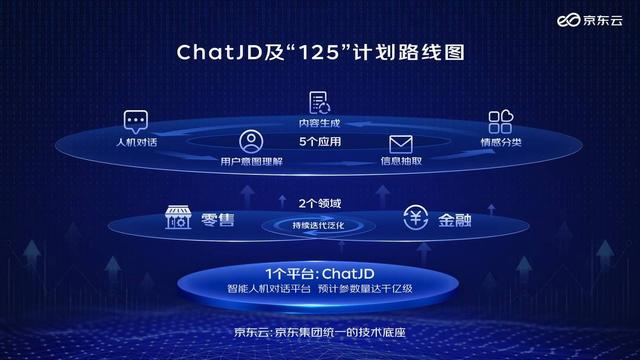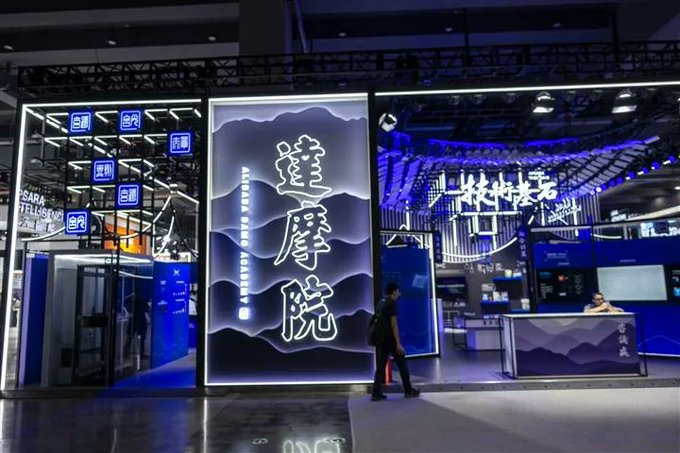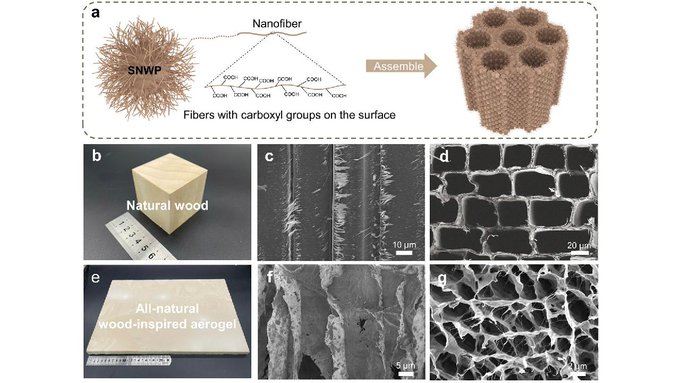You are using an out of date browser. It may not display this or other websites correctly.
You should upgrade or use an alternative browser.
You should upgrade or use an alternative browser.
News on China's scientific and technological development.
- Thread starter Quickie
- Start date
JD Cloud's lab will develop the industrial version of , ChatJD, Shanghai Securities News reported today. The firm also issued a "125" plan, building one smart man-machine dialogue system covering two areas of retail and finance across 5 applications..


Alibaba’s Damo Academy is developing a -like dialogue robot which is open to employees for internal testing, 21st Century Business Herald reported yesterday, citing a senior technical expert at Alibaba. Baidu said earlier it will launch chatbot Ernie Bot next month...


Shanghai to Construct, Start Building 77 Tech Industry Projects in 2023

Shanghai has 77 technology industry projects lined up for construction or for building work to start this year, with some already underway.
The projects are aimed at promoting China’s large-scale scientific facilities and Shanghai’s leading biomedicine, integrated circuit, and artificial intelligence industries, the Shanghai Municipal Development and Reform Commission, the city’s top economic planning agency, told Yicai Global yesterday.
Shanghai will invest around CNY1.7 trillion (USD250.4 billion) in a total of 191 key projects, with over CNY215 billion (USD31.7 billion) spent in 2023, a 7.5 percent increase from a year earlier, according to local government data.
Eight of the 77 tech projects will be finished by the end of this year, including WuXi Biologics’ global innovative biological research, development, and production center, Stemirna Therapeutics’ mRNA vaccine production line, SenseTime’s AI platform, and ABB Group’s robotics gigafactory.
Eight other tech projects will begin construction this year, such as Jianfeng Group’s electronic special material plant, AVIC Kaimai Infrared Technology’s infrared detector plant, Citic Offshore Helicopter’s East China drone headquarter, and SC Johnson’s capacity expansion project at its Chinese factory.
Some of the remaining projects have already begun construction, including Semiconductor Manufacturing International’s 12-inch chip plant and Shanghai United Imaging Healthcare’s production, research, and design base.

Shanghai has 77 technology industry projects lined up for construction or for building work to start this year, with some already underway.
The projects are aimed at promoting China’s large-scale scientific facilities and Shanghai’s leading biomedicine, integrated circuit, and artificial intelligence industries, the Shanghai Municipal Development and Reform Commission, the city’s top economic planning agency, told Yicai Global yesterday.
Shanghai will invest around CNY1.7 trillion (USD250.4 billion) in a total of 191 key projects, with over CNY215 billion (USD31.7 billion) spent in 2023, a 7.5 percent increase from a year earlier, according to local government data.
Eight of the 77 tech projects will be finished by the end of this year, including WuXi Biologics’ global innovative biological research, development, and production center, Stemirna Therapeutics’ mRNA vaccine production line, SenseTime’s AI platform, and ABB Group’s robotics gigafactory.
Eight other tech projects will begin construction this year, such as Jianfeng Group’s electronic special material plant, AVIC Kaimai Infrared Technology’s infrared detector plant, Citic Offshore Helicopter’s East China drone headquarter, and SC Johnson’s capacity expansion project at its Chinese factory.
Some of the remaining projects have already begun construction, including Semiconductor Manufacturing International’s 12-inch chip plant and Shanghai United Imaging Healthcare’s production, research, and design base.
manqiangrexue
Brigadier
Man, every time I see you post, it's that China should have started GMO earlier. Guess what? That's not useful or legitimate advice to ever tell someone they should have gotten started earlier. Yeah, China should have started its science drive 500 years earlier and used tanks, missiles and fighter jets to destroy Western Europe while they were still trying to stab people with swords. True? Yeah. Useful? As much as yours.Ok so regarding GMOs, development is difficult yes, but that just means that China should have gotten started earlier, much earlier. At the very least, sort out regulations to allow for the planting of domestic crops so that companies can at least feel safe enough to actually start some major R&D, but with a strict selection process so that no rushed unsafe or abusive products are released. I know that China is reforming it's GMO regulations, but it's so slow that it's going to be 2025 before we see GMO crops being planted on Chinese soil and another couple of years before it really takes off and public acceptance, it really should have been done 20 years ago.
It's not like it's a new technology, basic GMOs have been around for 40 years. CRISPR just brings it into the next level. Also CRISPR makes things so much easier, as compared to the current method of cross breeding or random mutation, which can take decades to produce results. CRISPR makes things so easy that there's hobbyist and amateurs doing gene splicing experiments in their back yard that would have taken an entire team of PHDs and a billion dollar lab 20 years ago. That's why the threat of bioterrorism is so high, CRISPR just makes things too easy.
And for those who think that it's "evil business technology" it's just a technology, it's up to the country and companies developing it to decide how they want to use it. It's like rejecting the very idea of painkillers because Purdue Pharma is making people addicted to them as a business practise or saying that water is bad just because Nestle steals water from developing countries. There's plenty of ways that GMO can be used to avoid the current bad business practise that we see with Monsanto, focus on areas that improve grow speed and not herbicides/pesticides resistance to avoid herbicides/pesticides overuse, avoid a monopoly/duopoly and try to have maybe half a dozen companies offering completing products, have the state develop some GMO crops and give them to farmers for free, open source seeds etc etc
It's an extremely important techolohny for the most important part of the economy and for civilization itself, especially with how much food China is importing.
China's doing GMO now; we're doing it under our control with our technology. That's all that matters.
Chinese researchers devised a new islet transplantation strategy, in which human pluripotent stem-cell-derived islets are implanted in subanterior rectus sheath, highlighting a potential cure for type 1 diabetes and the possibility to free diabetes patients from insulin injection..

If you shows me the image with no context then I’d have guessed that it is a transplant for turning people into gigachads. Why they needed a guy with six packs?
Looking at the text and the six abs I can conclude it's now possible to place cells that generate insuline below the skin. Usually those cells should be in the pancreasIf you shows me the image with no context then I’d have guessed that it is a transplant for turning people into gigachads. Why they needed a guy with six packs?
Chinese government is calling for requests for grant in FY 2023 on major R&D in "post-Moore new semiconductors".
2023年度项目指南
本重大研究计划面向芯片自主发展的国家重大战略需求,以芯片的基础问题为核心,旨在发展后摩尔时代新器件和计算架构,突破芯片算力瓶颈,促进我国芯片研究水平的提升,支撑我国在芯片领域的科技创新。
一、科学目标
本重大研究计划面向未来芯片算力问题,聚焦芯片领域发展前沿,拟通过信息、数理、材料、工程、生命等多学科的交叉融合,在超低能耗信息处理新机理、载流子近似弹道输运新机理、具有高迁移率与高态密度的新材料、高密度集成新方法以及非冯计算新架构等方面取得突破,研制出1fJ以下开关能耗的超低功耗器件和超越硅基CMOS载流子输运速度极限的高性能器件,实现算力提升2个数量级以上的非冯架构芯片,发展变革型基础器件、集成方法和计算架构,培养一支有国际影响力的研究队伍,提升我国在芯片领域的自主创新能力和国际地位。
二、核心科学问题
针对后摩尔时代芯片技术的算力瓶颈,围绕以下三个核心科学问题展开研究:
(一)CMOS器件能耗边界及突破机理。
需要重点解决以下关键问题:探寻CMOS器件进行单次信息处理的能耗边界,研究突破该边界的新机理,实现超低能耗下数据的计算、存储和传输。
(二)突破硅基速度极限的器件机制。
需要重点解决以下关键问题:在探索同时具备载流子长自由程和高态密度的新材料体系基础上,研究近似弹道输运的器件机理,实现突破硅基载流子速度极限的高性能器件。
(三)超越经典冯∙诺依曼架构能效的机制。
需要重点解决以下关键问题:探寻计算与存储融合的机制与方法,并结合新型信息编码范式,实现新型计算架构,突破冯∙诺依曼架构的能效瓶颈。
三、2023年度资助的研究方向
(一)培育项目。
围绕上述科学问题,以总体科学目标为牵引,2023年度拟资助探索性强、选题新颖、前期研究基础较好的申请项目,研究方向如下:
1.超低功耗器件的理论、材料与集成技术。
针对1fJ以下的开关能耗目标,研究超越CMOS的新原理逻辑、存储、感知器件及其核心材料与集成技术;研究极端物理条件下的极低功耗信息处理与存储机制及模型。
2.高速高性能器件的理论、材料与集成技术。
探究弹道输运机制,寻求超越传统硅基沟道自由程和态密度的半导体材料,研究并实现高弹道输运系数的新型场效应器件;探索有限能耗下的信息高速处理、存取与传输新机制及其器件技术。
3.高能效计算与存储架构。
探寻突破冯∙诺伊曼能效瓶颈的新型计算架构和存储架构,研究面向存内计算新架构的设计方法学。
(二)重点支持项目。
围绕核心科学问题,以总体科学目标为牵引,2023年拟资助前期研究成果积累较好、处于当前研究热点前沿、对总体科学目标有较大贡献的申请项目,研究方向如下:
1.原子级沟道P型晶体管。
研制高性能低功耗原子级沟道P型晶体管,沟道厚度小于1.5nm,迁移率大于100cm2/V∙s,Vds = 1V时开态电流大于600μA/μm、关态电流小于100pA/μm。
2.硅基新型神经突触器件。
研制硅基新型神经突触器件,探索器件在电和近红外光刺激下多电导态产生的光电协同机理,阐明影响器件及其阵列波动性、重复性的物理机制和突触行为机理,并建立相关模型。实现阵列规模不小于4kbit,单次操作能耗低于1fJ、操作速度达到纳秒量级、权重精度达到3bit以上,并实现基于神经突触阵列的神经形态视觉。
3.多元编码融合的张量处理架构。
研究随机数、定点数、浮点数等两种或多种新型编码共融的编码机制,以及数字域、时间域、频率域多域融合的计算范式,数据精度可配置、数模计算异步协同的新型架构,探索编码可重构、硬件可复用的电路设计技术,研制高精度的张量处理器芯片,8bit等效精度下的计算密度大于5TOPS/mm2、能效大于50TOPS/W。
4.异构融合的高能效存内搜索架构。
研究非易失关联存储器及其集成技术、异构融合存内搜索架构以及混合精度能效提升技术,单比特搜索能耗低于1fJ,在多模态信息检索任务验证中实现与软件相当的搜索准确率,8bit等效精度下的能效大于50TOPS/W。
关于发布后摩尔时代新器件基础研究重大研究计划2023年度项目指南的通告
后摩尔时代新器件基础研究重大研究计划2023年度项目指南
本重大研究计划面向芯片自主发展的国家重大战略需求,以芯片的基础问题为核心,旨在发展后摩尔时代新器件和计算架构,突破芯片算力瓶颈,促进我国芯片研究水平的提升,支撑我国在芯片领域的科技创新。
一、科学目标
本重大研究计划面向未来芯片算力问题,聚焦芯片领域发展前沿,拟通过信息、数理、材料、工程、生命等多学科的交叉融合,在超低能耗信息处理新机理、载流子近似弹道输运新机理、具有高迁移率与高态密度的新材料、高密度集成新方法以及非冯计算新架构等方面取得突破,研制出1fJ以下开关能耗的超低功耗器件和超越硅基CMOS载流子输运速度极限的高性能器件,实现算力提升2个数量级以上的非冯架构芯片,发展变革型基础器件、集成方法和计算架构,培养一支有国际影响力的研究队伍,提升我国在芯片领域的自主创新能力和国际地位。
二、核心科学问题
针对后摩尔时代芯片技术的算力瓶颈,围绕以下三个核心科学问题展开研究:
(一)CMOS器件能耗边界及突破机理。
需要重点解决以下关键问题:探寻CMOS器件进行单次信息处理的能耗边界,研究突破该边界的新机理,实现超低能耗下数据的计算、存储和传输。
(二)突破硅基速度极限的器件机制。
需要重点解决以下关键问题:在探索同时具备载流子长自由程和高态密度的新材料体系基础上,研究近似弹道输运的器件机理,实现突破硅基载流子速度极限的高性能器件。
(三)超越经典冯∙诺依曼架构能效的机制。
需要重点解决以下关键问题:探寻计算与存储融合的机制与方法,并结合新型信息编码范式,实现新型计算架构,突破冯∙诺依曼架构的能效瓶颈。
三、2023年度资助的研究方向
(一)培育项目。
围绕上述科学问题,以总体科学目标为牵引,2023年度拟资助探索性强、选题新颖、前期研究基础较好的申请项目,研究方向如下:
1.超低功耗器件的理论、材料与集成技术。
针对1fJ以下的开关能耗目标,研究超越CMOS的新原理逻辑、存储、感知器件及其核心材料与集成技术;研究极端物理条件下的极低功耗信息处理与存储机制及模型。
2.高速高性能器件的理论、材料与集成技术。
探究弹道输运机制,寻求超越传统硅基沟道自由程和态密度的半导体材料,研究并实现高弹道输运系数的新型场效应器件;探索有限能耗下的信息高速处理、存取与传输新机制及其器件技术。
3.高能效计算与存储架构。
探寻突破冯∙诺伊曼能效瓶颈的新型计算架构和存储架构,研究面向存内计算新架构的设计方法学。
(二)重点支持项目。
围绕核心科学问题,以总体科学目标为牵引,2023年拟资助前期研究成果积累较好、处于当前研究热点前沿、对总体科学目标有较大贡献的申请项目,研究方向如下:
1.原子级沟道P型晶体管。
研制高性能低功耗原子级沟道P型晶体管,沟道厚度小于1.5nm,迁移率大于100cm2/V∙s,Vds = 1V时开态电流大于600μA/μm、关态电流小于100pA/μm。
2.硅基新型神经突触器件。
研制硅基新型神经突触器件,探索器件在电和近红外光刺激下多电导态产生的光电协同机理,阐明影响器件及其阵列波动性、重复性的物理机制和突触行为机理,并建立相关模型。实现阵列规模不小于4kbit,单次操作能耗低于1fJ、操作速度达到纳秒量级、权重精度达到3bit以上,并实现基于神经突触阵列的神经形态视觉。
3.多元编码融合的张量处理架构。
研究随机数、定点数、浮点数等两种或多种新型编码共融的编码机制,以及数字域、时间域、频率域多域融合的计算范式,数据精度可配置、数模计算异步协同的新型架构,探索编码可重构、硬件可复用的电路设计技术,研制高精度的张量处理器芯片,8bit等效精度下的计算密度大于5TOPS/mm2、能效大于50TOPS/W。
4.异构融合的高能效存内搜索架构。
研究非易失关联存储器及其集成技术、异构融合存内搜索架构以及混合精度能效提升技术,单比特搜索能耗低于1fJ,在多模态信息检索任务验证中实现与软件相当的搜索准确率,8bit等效精度下的能效大于50TOPS/W。
lol, someone created a thread of what I posted on the Huawei HarmonyOS hyper terminal and sharing functionality. Needless to say, it's fantastic.
Back 10 years ago, nerds often say that they can live in Google's world of internet products. Well, you can actually live in Harmony world of real products.
Back 10 years ago, nerds often say that they can live in Google's world of internet products. Well, you can actually live in Harmony world of real products.
The likes of Alphafold, GPT3, Codex, ChapGPT still has no Chinese equivalent that has comparable performance. I agree with many people said already,Chinese companies generally don't invest in prospective projects that has no immediate commercial value,they only follow international trend which already proven success,you rarely heard of China come out with something original in the field of AI.
There is also an interesting point that has been raised many times,that is the cost of these project is huge. Nvidia currently monopolize Chinese AI hardware market and it's product aren't cheap,not to mention the export restrictions of GPU. So making domestic high performance GPU and bring down the cost of it,is really vital to Chinese AI development in the future
There is also an interesting point that has been raised many times,that is the cost of these project is huge. Nvidia currently monopolize Chinese AI hardware market and it's product aren't cheap,not to mention the export restrictions of GPU. So making domestic high performance GPU and bring down the cost of it,is really vital to Chinese AI development in the future

